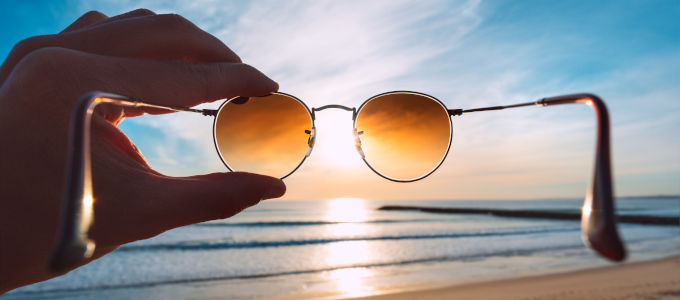

 by
Mamisoa Andriantafika
by
Mamisoa Andriantafika
Solar radiation can be dangerous to our eye health without adequate protection. Sunglasses play a key role in this protection, but not all sunglasses are equal in terms of eye protection. Here is a comprehensive guide to understanding and choosing the most suitable sunglasses for your situation.
The first feature to look for when choosing sunglasses is their ability to block 100% of UVA and UVB rays. These two types of ultraviolet radiation are responsible for cellular damage in eye tissues, causing mutations that can lead to either premature cell death or the uncontrolled growth of abnormal cells.
The retina, specifically its central region called the macula, is particularly vulnerable to UV damage. It is a known risk factor for AMD, or age-related macular degeneration.
The lens is the eye's natural lens that allows us to focus. It can become opaque due to excessive UV exposure, leading to a condition called cataract .
The conjunctiva is a mucous membrane that covers the front of the eye and can be altered by UV exposure. This exposure can lead to the formation of raised lesions called pterygium or pinguecula. Let's not forget that UV radiation exposure also promotes premature skin aging, especially of the delicate eyelid skin.
UV rays can cause cataract, AMD, or premature skin aging
Lens opacity does not necessarily indicate UV protection.
It is rated on a scale from 0 to 4, indicating the amount of light transmitted from 100% to 3%, respectively. It is crucial to note that opacity does not necessarily indicate UV protection: clear lenses can provide maximum UV protection while dark lenses may provide none.
As for lens color, it influences visual perception. Gray lenses provide clarity of vision, amber lenses enhance contrast, and green lenses improve color accuracy.
Regarding photochromic lenses, which darken in response to light, they generally do not provide opacity exceeding 80% and do not guarantee UV protection on their own.
Finally, polarization can be an interesting feature as it limits glare by filtering horizontally polarized light rays, particularly useful in situations with strong reflection.
Special attention should be given to the eye protection of children. For those who require vision correction, it is recommended to prioritize wearing a hat or cap that protects the eyes as well as the entire face and top of the head, rather than investing in prescription sunglasses.
For children without vision correction, non-corrected sunglasses can be considered, but the use of a hat is still strongly recommended.
In conclusion, protecting your eyes from the sun is a major concern for eye health. It is essential to choose sunglasses that offer optimal protection. After all, your eyes deserve the best care possible.
